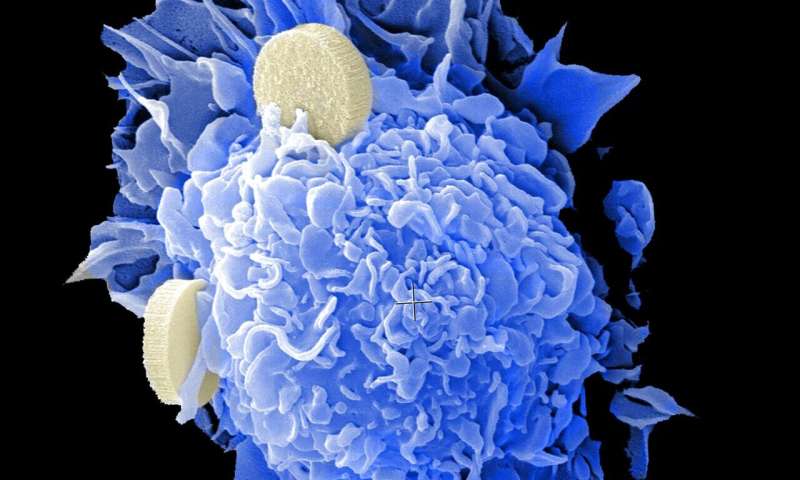Study explores if insurance is keeping pace with trends in targeted cancer therapy

New research from the University of California, San Francisco (USCF) and City of Hope in the July 2020 issue of JNCCN—Journal of the National Comprehensive Cancer Network examines coverage trends for circulating tumor DNA testing, also known as gene sequencing of ctDNA or “liquid biopsies.” CtDNA is formed when tumor cells shed cell-free DNA fragments containing valuable information for detecting the tumor’s genetic attributes into the bloodstream. Clinicians can use that genetic information to determine the optimal course of treatment. In the first-ever study to analyze insurance coverage for ctDNA-based panel tests, researchers found public and private coverage of liquid biopsy tests has grown rapidly in recent years, but some significant limitations remain.
“Genomic ctDNA or liquid biopsy tests hold great potential to improve patient outcomes although, as with any emerging test, it can be challenging to develop the most appropriate coverage policies,” explained lead researcher Michael P. Douglas, MS, Department of Clinical Pharmacy, UCSF Center for Translational and Policy Research on Personalized Medicine (TRANSPERS). “These tests can be used to guide initial therapy, identify relevant clinical trials, and help us understand and tailor therapy based on mechanisms of resistance. However, the emerging use of liquid biopsy tests for cancer screening and early detection—in addition to selecting targeted treatment and monitoring response —will require new assessments to develop appropriate coverage policies.”
While the authors found increasing coverage for ctDNA panel testing, the policies were written with carefully-defined and limited clinical scenarios such as EGFR gene analysis or specific brand name tests.
“The NCCN Guidelines for Non-Small Cell Lung Cancer currently state that ctDNA testing can be considered for monitoring purposes when a patient with a confirmed lung cancer diagnosis is medically unfit for invasive tissue sampling,” commented David S. Ettinger, MD, of The Sidney Kimmel Comprehensive Cancer Center at Johns Hopkins, who chairs NCCN’s Guideline Panel for Non-Small Cell Lung Cancer but was not involved with this study. “While coverage is expanding, it still takes too long to adapt policies which often vary from state to state. We recommend specific testing be conducted as part of a broad molecular profiling, at least for advanced or metastatic disease. It can be faster to get a liquid biopsy than to get a patient scheduled for a tissue diagnosis.
In patients with confirmed lung cancer, if the ctDNA analysis yields actionable mutations, the results are unambiguous and useful for clinical care and decision making. However, if the ctDNA results are negative, there remains an approximate 30% chance that the ctDNA analysis is inaccurate, and consideration should be given to tissue-based analysis to further determine if actionable mutations are present. I agree with the authors’ conclusions that payers and policymakers need to approve policies that keep up with the advances made in molecular profiling and clinical care in order to improve care for people with cancer.”
The researchers used the Canary Insights Database to analyze private, commercially available payer coverage policies, Medicare National Coverage Determinations (NCD) and Medicare Administrative Contractor Local Coverage Determinations (LCD) from 2015 through July 1, 2019. The database is a public library of more than 40,000 medical policies from commercial and public payers. None provided coverage for liquid biopsies at the start of 2016, but as of mid-2019 the coverage rate had risen to 38%. The policies also increased in scope from 2017-2019, going from one cancer type to 12, and going from a single gene to 73 genes. They also found 45 payers with specific policies against coverage. Medicare coverage policies were found to be evolving toward use across all cancer types, signifying a major shift.
“We think that the increased coverage, especially Medicare coverage of pan-cancer use, will expand the use of liquid biopsy in clinical practice in the future,” said Douglas. “The hope is that results in more targeted care with better treatment and diagnostic options, leading to long term benefits.”
Source: Read Full Article
